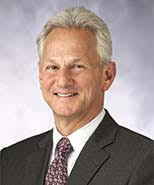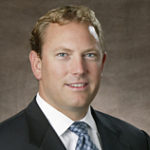Dear Friends,
This issue of Eagle Talk features Scott Millimet, who was a client at PIMCO for a number of years. We developed a strong sense of Shared Values which became the cornerstone for the work we did together with his superb Client Team. His experience, wisdom and commitment to excellence made him a standout “Leader” within PIMCO. He is a good friend and a wise mentor for me as well. I believe you will find his ideas well worth reading and reflecting upon.
— Bob

Scott Millimet
Scott Millimet is responsible for developing and incorporating practices that broaden and deepen institutional client relationships with a focus at the C-suite level. As a top-performing Investment Specialist with over 40 years of experience, he brings unparalleled expertise in propelling growth in revenues and assets under management. Scott recently retired from PIMCO and is the Founder and CEO of Institutional Client Management LLC. In his role as Executive Vice President and Head of the Insurance Channel at PIMCO, Scott provided visionary leadership and built and mentored successful teams that continue to drive growth across the organization. Scott is a champion for advancing influential service organizations; he served as a member of the Board of Directors, and Secretary for Services, for the Underserved in New York City, and previously served on the Advisory Board for Operation Homefront, Northeast Region. He has received broad recognition for executive leadership and his ability to provide solutions to maximize and achieve results. Scott has a BS in Economics and an MS in Agricultural Economics (International Trade), both from Texas A&M University.
I have been asked by Bob to address the lessons of leadership – learned and imparted – during my nearly 20-year career at PIMCO, developing and growing a team-servicing insurance companies and their balance sheet assets. The lessons are many, but generally follow the same theme – “do the right thing.” This means at all times maintaining the highest levels of integrity (internal and external to the firm) and understanding what “the right thing” actually is.
PIMCO is one of the world’s largest fixed-income asset managers with an historical focus on total return (TR) management. More specifically, TR means managing portfolios by buying relatively low-priced bonds and selling them when they appreciate to a relatively rich level. Capital gains are thus a large component (together with the bond’s coupon) of a portfolio’s total return. Insurance company balance sheet assets however, are managed with a unique investment function – stable, consistent and high quality income. Since capital gains may not be repeatable – particularly as interest rates have moved to record lows post the financial crisis – maximizing the coupon or yield of the portfolio, while minimizing losses, becomes the preeminent investment objective.
Convincing PIMCO to segue into a new area of (insurance) asset management, particularly one known for paying low management fees, was no easy task. Importantly it required convincing firm leadership that it was “the right thing to do.” This required numerous presentations on facts, such as the size of the potential market, stability of the potential client asset base, and access to large pools of assets that were (are) higher return seeking and that were aligned with PIMCO’s objectives and aspirations. With a green light from senior management and a business plan that defined “success,” the fun part began – building a team, growing a client base, and running a business.
Pulling together a team that operated somewhat outside the mainstream or “factory” of PIMCO’s TR management style required self-starters that were interested and capable of operating independently but within the context of team. It also required risk-takers that were willing to be part of a start-up within the walls of PIMCO. As a leader, defining our mission was simple – develop relationships with each client such that PIMCO, and the individual client service representative, was always the first call, regardless of the client question (be it a good restaurant in NYC or risk metrics within their portfolio). To achieve this goal the members of my team were required to learn the nuances of managing insurance portfolios, provide unparalleled client service and face-to-face interaction, all while supporting each other. My role as mentor, coach and manager was to provide a fun environment, conducive to long hours anticipating and meeting client needs, learning from our clients and each other, and aiming to be the best in the business.
One measure of success was the number of times a client referred us to a prospective client (making clients one of our best business development tools). Another measure was growth in assets under management – from under $5 billion to several $10’s of billions during my tenure. Perhaps the most personally satisfying measure of success was the number of PIMCO employees from other divisions seeking to be part of the “insurance team.”
Let’s take a micro-look at several of the underlying factors behind PIMCO’s insurance client servicing team and its success.
Leadership Skills:
- Agree on the achievable and stretch individual and team performance metrics, and provide the environment necessary to accomplish those objectives; exceed management expectations;
- Provide clear professional (and career) guidance with sufficient independence granted to each and every member of the team; encourage team members to “manage up”;
- Read books by successful leaders – be they in traditional business or from a military background; (there is a reason the military has required reading lists!)
- Have and express opinions based on sound premises – but hear out and respect the opinions of others that may disagree; have conviction;
- Address areas of disagreement and/or conflict head on with a high degree of urgency. Ensure the rationale behind resolutions is clearly understood such that there are no lingering frustrations;
- Mentor and coach. Mentor and coach. Mentor and coach. Ensure every member of the team (including me as manager) is learning and advancing their careers; management should always learn from the members of the team and listen to their ideas and input;
- Embrace the team’s differences and diversity – and ensure every member understands their opinion is necessary to enhance good decision making;
- Have fun – the team spends too many hours together not to have fun, even when pressures are mounting. Arrange frequent but optional social events.
Client Service Guidelines:
- Each client is unique – understand the nuances that make this so;
- The clients’ interests always come first; this is different than the client is always right, which is not the case;
- Communicate extensively, face-to-face when possible, by telephone, and lastly by email;
- Exceed client expectations by providing an aggressive time-frame for meeting client requests – and then beating it;
- Arrange professional client events to ensure clients meet other clients and have the opportunity to sing their praise to each other;
- Make sure clients understand the sincerity of the appreciation we have for them; the team is nothing without them;
- Develop personal relationships when possible and practical – enhancing the likelihood of being the first call for all matters business or not.
While some leaders are indeed born, the majority are developed by successful leaders themselves. They mentor and motivate, listen and guide, all while creating an enthusiastic team of future leaders that primes the pump for the continuity of success. Developing a team of industry-leading client service professionals requires a strong, motivating leader, a simple set of guiding principals, and the conviction that the team is “doing the right thing,” always in the best interests of their clients.
Following these guidelines on management and client service can facilitate the growth of a best-in-class operation that exceeds the expectations of a company’s stakeholders.






